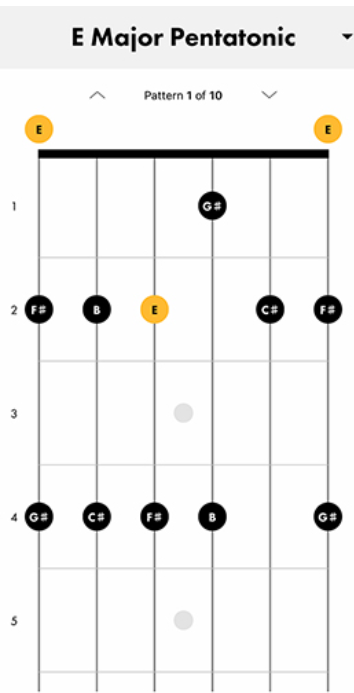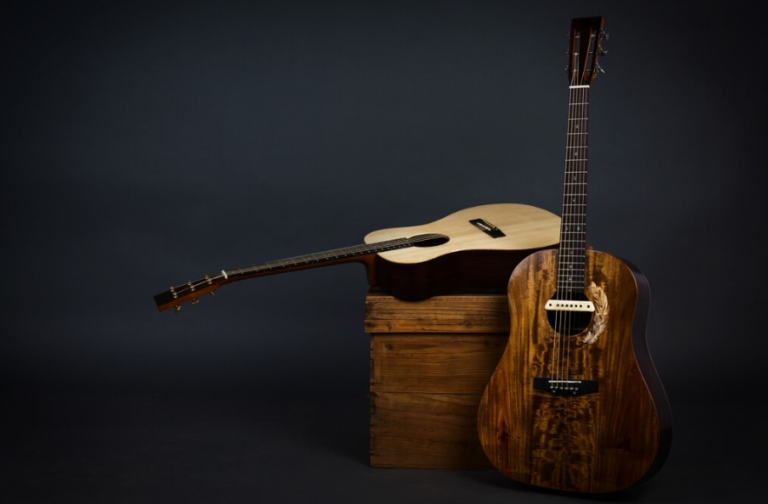Fundamentals Of The E Major Pentatonic Scale

If you’re starting to play guitar, you might not be familiar with pentatonic scales, however, they can help you to learn a whole new world of tones for you and grow your proficiency with your instrument.
In this lesson, the pentatonic scale is a five-note musical scale that is widely used across many genres including rock, blues, jazz, and country. The E Major Pentatonic Scale, in particular, provides a bright and open sound that is perfect for soloing, creating melodies, or just jamming along with other musicians. This a scale all guitarists and musicians must learn.
Once you get to know the E major pentatonic scale, you can pick it out easily in songs of multiple genres from rock and country to folk and blues.
Get ready to warm up your fingers and get familiar with the E major pentatonic scale as in this blog, we’ll explore how to play the E Major Pentatonic Scale on the guitar, and how to play it in an open position with its diagram for easier understanding, we will provide tips for practice, and discuss how you can incorporate this scale into your playing.
What is the E Major Pentatonic Scale?
The E Major Pentatonic Scale is a five-note scale derived from the notes of the E major scale. However, it omits the fourth and seventh scale degrees, making it simpler and highly versatile. The notes that build the E Major Pentatonic Scale are:
E (Root)
F# (Second)
G# (Third)
B (Fifth)
C# (Sixth)
Fingering the Scale on Guitar
There are a variety of ways to play the E major pentatonic scale on the guitar but, here’s a common position to start with, which uses the open position. As well, help your self with the diagram bellow for easier understing:

- Open E (6th string): Play open.
- F# (6th string, 2nd fret): Use your index finger.
- G# (6th string, 4th fret): Use your ring finger.
- Open B (5th string): Play open.
- C# (5th string, 4th fret): Use your ring finger.
- Open E (4th string): Play open.
This position utilizes open strings and is accessible for beginners. It’s also a great way to start feeling comfortable with the scale.
Practice Tips
Here are some tips to help you master the E Major Pentatonic Scale:
- Start Slowly: Begin by playing the scale slowly and evenly. Focus on clean fingering and clear note articulation. Don’t worry about doing it all at once.
- Use a Metronome: As you become more comfortable, practice with a metronome. Gradually increase the speed as your confidence builds.
- Play Along: Try playing along with songs that are in the key of E major. This will help you understand how the scale fits within different chord progressions and at the same time, it will help listen to how it should sound.
- Experiment with Phrasing: Break away from playing the scale straight up and down. Try skipping notes, playing in intervals, or creating small licks within the scale.
Applying the Scale Musically
The E Major Pentatonic Scale can be a powerful tool for soloing and improvisation. Here are some ways to apply it:
- Solos: Use the scale to craft solos over E major or E dominant chord progressions.
- Melodies: Create melodies by combining scale notes in creative ways.
- Layering: Add layers to your music by playing the scale over different chords and seeing how it changes the mood or feel.
The E Major Pentatonic Scale is an essential part of the guitarist’s toolkit. With its pleasing sound and versatile application, it can elevate your playing and provide you with a foundation for improvisation and melody creation. Practice regularly, experiment with different musical contexts, and most importantly, have fun exploring the musical possibilities!






